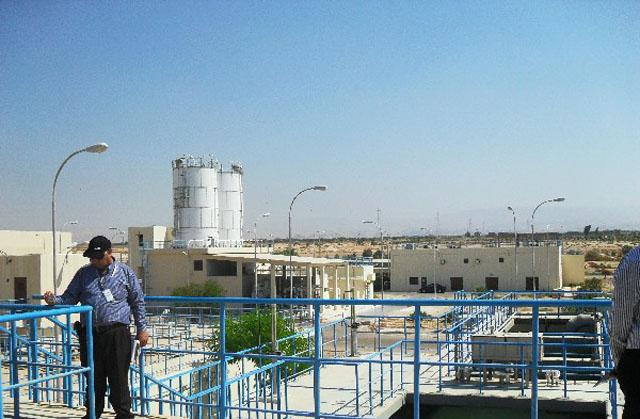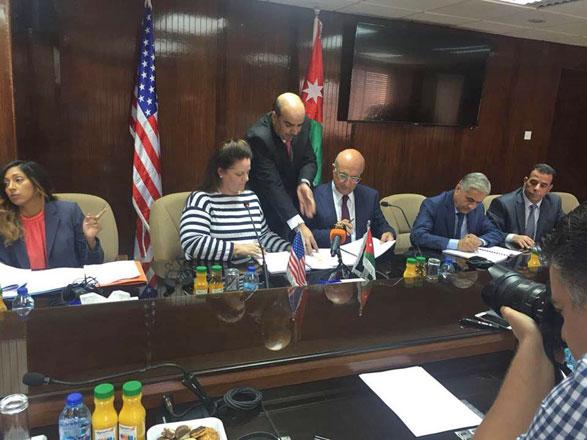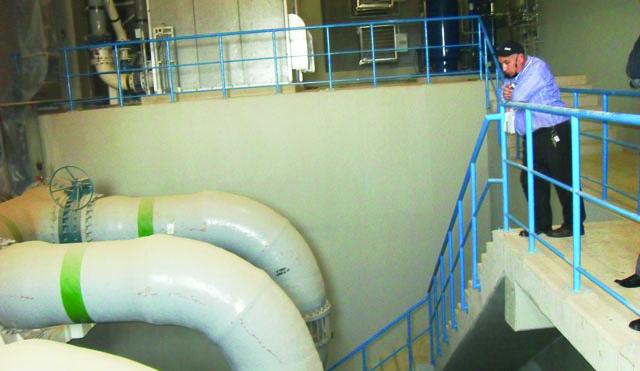You are here
‘Water treatment — a difficult, costly and time-consuming process’
By Hana Namrouqa - May 17,2014 - Last updated at May 17,2014

AMMAN — Very few people in Jordan realise how difficult, costly and time-consuming the treatment of water is before it reaches their homes, Zara-Maeen Water Treatment Plant Manager Ibrahim Ghandour said.
Raw water passes through several complex phases during its treatment process, which takes five to six hours, before it leaves the Zara-Maeen plant and starts an eight-hour journey from the lowest point on earth and up into the capital’s reservoirs, Ghandour noted.
“The less water there is, the more expensive investments are needed to secure the water, treat it and pump it to people,” he told journalists last Thursday during a media tour of the plant, organised by the Jordan Water Company (Miyahuna), in cooperation with the USAID-funded Public Action for Water, Energy and Environment Project.
The capital’s second main water source, the Zara Maeen plant supplies Amman with 30-33 per cent of its water needs. The treatment plant receives water from three surface sources: Wadi Mujib, Zara springs and Wadi Zarqa-Maeen, according to Ghandour.
Established at a cost of $125 million, the plant started operating in August 2006, pumping 47 million cubic metres (mcm) of water to the capital to cater to the needs of over one million of its residents.
“Because treated water is transferred from the plant to the Dabouq reservoir in Amman via a 40-kilometre transmission pipeline, it is tested... every six hours to make sure that we are delivering a safe and clean product,” Ghandour said.
He noted that if any sample shows that the water quality is below Jordan’s drinking water standards, the plant stops pumping to detect the source of the pollution.
“Water quality control is continuous; it relies on live readings,” Ghandour added, highlighting that tests of water samples have rarely shown that it did not meet drinking water standards.
The plant was designed to treat 48mcm per year, but it actually treats 38-40mcm depending on the available amount of water.
“Because the plant depends on surface water, rainfall frequency clearly affects the amount and quality of water the plant receives. When not enough water runs into Wadi Mujib, the plant resorts to the Mujib Dam,” Ghandour told The Jordan Times.
He underscored that the plant discharges 10 per cent of the treated water, which is brine, into the Dead Sea through a five-kilometre pipeline.
Related Articles
AMMAN — Jordan and the US on Wednesday signed two grant agreements worth $166 million to rehabilitate Amman’s second main water resource and
Although pumping from the Zara-Maeen Water Treatment Plant remained suspended for the second consecutive day on Sunday, the capital’s water distribution programme will not be disrupted, according to an official source at the Jordan Water Company (Miyahuna).
The Jordan Water Company (Miyahuna) on Wednesday suspended pumping from several of Amman’s main water resources due to increased turbidity levels.

















